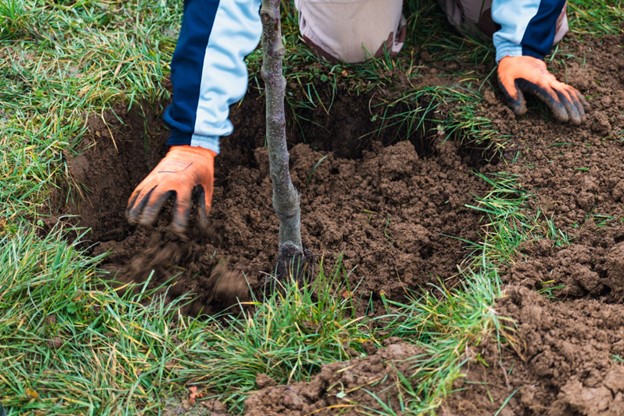By: Penelope Gardner
The Director of Lake County Programs for Openlands, Sarah Surroz, spoke at the January 10 meeting of the Lake County Committee for Planning, Building, Zoning and Environment about the benefits of native trees and shrubs.
Openlands has been providing content expertise to Lake County’s Department of Planning, Building, and Zoning toward this initiative for the past year, including an assessment of market conditions with scenario testing.
“With a few amendments to your ordinance, the trees and shrubs of Lake County can provide a lot of additional services to the residents moving forward for decades to come,” Surroz said at the meeting. “This will not present a hardship to developers. In fact, costs will go down.”
All trees and shrubs provide us with oxygen, a cooling effect through both shade and evaporation, stormwater management, carbon sequestration, wildlife habitat and overall well-being, Surroz said.
“They are just as important as utilities and roads,” Surroz said.
However, the different species of trees provide varying benefits, with native species being the most beneficial to wildlife in comparison to cultivar varieties.
Native plants provide the best habitat for wildlife, with some species like chickadees only being able to reproduce in an environment that is 70% or more native plants, according to a 2018 study. They also offer genetic strength because they are diverse, unlike cultivars, which are clones. This diversity in genetics helps fortify their species against changes in environment or disease.
A number of Lake County Commissioners and staff had expressed the desire to update the landscaping ordinance that governs unincorporated Lake County. Openlands agreed to offer expertise and contributed concepts and details for consideration related to planting a diversity of species, including native species requirements, matching species to site conditions, eliminating the planting of invasive species and planting younger trees that can withstand transplanting better than larger trees.
The Openlands Trees & Shrubs Native to Northeastern Illinois handout is an example of one of the resources shared with the county during this project. Surroz explained that when seeking to purchase native species, this list is essential, and buyers must also use scientific names to ensure they are not buying an item whose scientific name has a third word in single quotes, the telltale sign of a cultivar.
“We’re not purists,” Surroz said. She noted that cultivars have many good qualities and can perform well in a landscaped setting, but they should not be viewed as natives and should never be used in a restoration project.
The 22 counties that make up the Chicago region feature native vegetation that is ecologically very diverse. It has more diversity than any single national park, with more than 1,500 native species.
Due to its rich ecological diversity, “Lake County has more threatened and endangered species than any other county in the state of Illinois,” Surroz said.
The Openlands staff contributing to this initiative include landscape ecologist Mary Fortmann and landscaping specialist and certified arborist Gerardo Trujillo.
If you live in Lake County, you can show your support by adopting a native tree or shrub for your property this spring.
